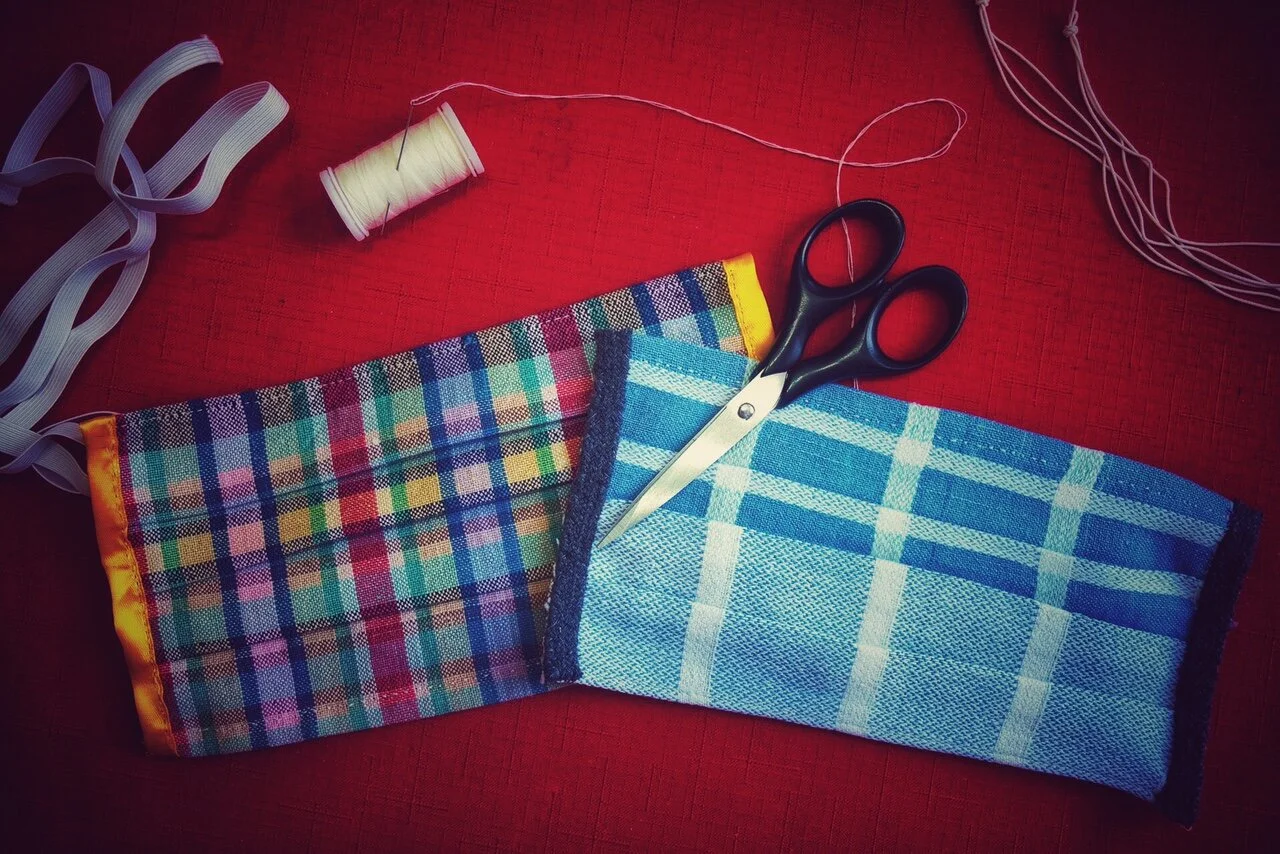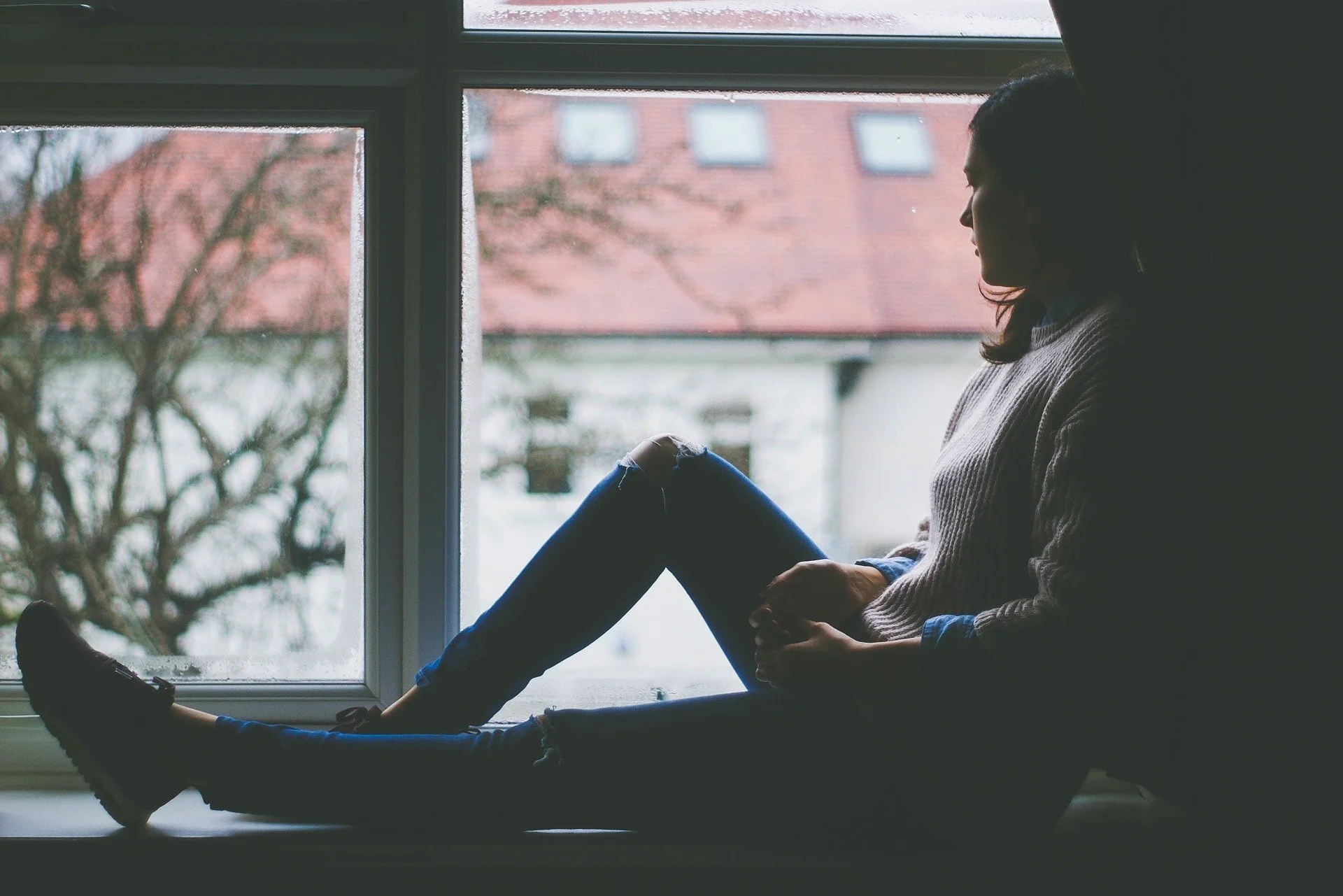Creating in the Time of COVID
In autumn 2020, a young journalist interviewed me about my work as an artist -- how had my art responded to the realities of the pandemic? But as the interview progressed, I began to sense a disconnect between what I had to share and what this journalist was seeking.
I described how much of my creative energies were being funneled into teaching art online to students with visual impairments, transitioning my adapted, accessible classes literally overnight. I explained how I was holding down the proverbial fort at home, managing two young children under age 5 and assisting the oldest with his daily online schooling.
“I see it as performance art,” I told her. “I’m keeping daily records in my journal of all that’s going on, and I’ve made a series of over 100 videos where I’m teaching my students and also talking to them as people, addressing their concerns and fears.”
She didn’t seem convinced.
More time passed, the conversation continued, and the disappointment in the journalist’s voice became increasingly perceptible. Perhaps she saw artmaking along the same lines as journalism (and understandably so)...that making art in the time of COVID-19 meant responding directly, clearly, and rapidly to the ever-evolving conditions of local and global socio-political landscapes. Perhaps she was seeking an artist-as-activist who was diving headfirst (with social distancing precautions in place) into nearby communities, providing pandemic-related awareness with art activations and hand-sewn face masks. Artists who were making major, public impacts -- NOW.
At this time, I can’t count myself among that fold.
I gently explained to the young journalist that there were many ways to respond to the pandemic, and that some artists have been called to fight a more backline, rather than frontline, battle. I also described the varied methods in which artists and creatives work; some feel a powerful calling to enter the fray immediately, taking conscious actions to help illuminate issues and inspire. Others, in contrast, require significant processing time. Their circuits may be fully overloaded with the mental stresses of this unprecedented global crisis, as well as the physical exhaustion of managing so much at home. There are artists (and people from all walks of life) completing superhuman feats by caring for loved ones who have contracted the virus, as well as people who have suddenly lost their jobs and are struggling to find a sustainable livelihood.
Over the course of the phone interview, the silences between the interviewer and myself began to lengthen. In these pauses, a memory from 2015 flashed through my mind. I was in graduate school, and we had been assigned to read The Expressiveness of the Body and the Divergence of Greek and Chinese Medicine by Shigehisa Kruiyama. The text was dense, and many students were expressing concerns about understanding the material and effectively translating the concepts into their artwork.
Our professor explained that some of us would immediately latch onto an idea, such as early illustrations of the human musculoskeletal system, and make artwork that provided a clear response. For example, a student created detailed drawings in pen and ink of the organ systems of the human body, then covered these drawings in semi-translucent layers of encaustic wax to simulate a protective layer of skin.
The professor continued, “Other students will read the material and take it in at a more subconscious level. You’ll sit down in your studio and not necessarily have an idea in mind. You’ll make an entire piece of artwork, perhaps from a more intuitive place, and let it rest for a day, a week -- maybe even a month or two. And then, one day, it will hit you: “Oh! This artwork is about mo in classical Chinese medicine!”
I remembered sitting in that classroom and feeling a flood of relief wash over me with her words. For me personally, art-making had always fallen into the latter camp; it was a practice that happened from a subconscious place of excavation. It was indirect rather than direct, composed of the stirrings deep below the iceberg that cannot be immediately seen on the surface. With her encouragement, this professor gave us permission to find out what was happening through the process of taking a journey with making the art, rather than immediately setting a direct course in mind.
My mind snapped from 2015 back to 2020 as the interview drew to a close. The journalist asked a final question: “Is there anything else you’d like to add, keeping in mind that this article is about how artists are responding to the pandemic?”
With those words, my stomach bottomed out to my feet. I felt chastened. Chastised. These feelings were entirely due to my interpretation of the situation, as well as that nagging voice at the back of my mind hollering, “What’s wrong with you? You should be doing more!”
I explained I had no further comment, thanked the journalist for her time, and we simultaneously hung up.
…
If you’ve found yourself feeling stirrings of creative guilt, you may find yourself in a similar situation. In a pandemic-stricken world, many of us are supposed to have “more” time on our hands (in theory). Fewer and fewer of us are going out and about, and weekends are often spent sheltering in place at home. As a result, you may feel more pressure to make efficient use of your time for creating. Or, perhaps you’ve been highly prolific with your work, but you worry it’s not timely enough. For example, in May 2020, I heard a writer exclaim in exasperation, “Every project I started before coronavirus seems completely irrelevant now!”
In November 2020 as I’m writing this inaugural blog post, it’s difficult to believe that there will be post-pandemic life again...that people will want to look at art of landscape scenes just to marvel in their breathtaking beauty, will want to read stories of magic mace-wielding princesses blasting through a post-apocalyptic ice planet. While it doesn’t feel this way now, I do believe this time (in some form or fashion) will come again, even if no one can say when.
If you also find yourself self-flagellating because you’ve not been “productive” in your 2020 creative work in ways you had originally expected, please take a few moments to release yourself from self-imposed pressures:
(1) Acknowledge where you are in this moment.
Are you doing the near-impossible juggling act of homeschooling children, being a caregiver for a family member, and/or trying to bring in a semi-stable income? Are you managing illness, whether physical and emotional, and each day is a battle to maintain your health? How have the events of 2020 dramatically changed your life, and what have you done to meet these challenges? Or, perhaps you’ve been one of the lucky ones. You’ve not been significantly affected in your personal life, and you feel incredible guilt as you witness others’ struggles and misfortune.
Allow yourself a moment to recognize that this is a crisis on a global scale beyond anything any current generations have ever experienced. On a daily basis, we’re all navigating tumultuous, uncharted waters. Be as compassionate and gentle with yourself as possible; in almost all cases, we’re doing our best to do our best.
(2) Allow yourself the freedom to accept that things will take the time that they need to take.
You were sent home from work, so you planned to finally write your novel manuscript this year over your lunch breaks. Or, you felt compelled to get involved in your city, working as an artist activist to raise awareness on how low-income families and the homeless have gravely suffered from the pandemic. Yet, you’ve found your projects stalling, perhaps even dissolving under the weight of daily demands and changing health conditions.
In these moments, it’s human nature to become discouraged and quit. As long as your physical and mental health allow you the energy, let yourself become content with baby-steps progress as needed. Perhaps you won’t meet the deadlines or have the reach you originally hoped for, but 15 minutes a day on your chosen projects can bring about substantial gains over time. Trust that any unexpected changes of plans will provide valuable fodder for these current pursuits, as well as ones you may wish to tackle in the future.
(3) Assess how you best respond to situations, both creatively and in the nuts and bolts moments of everyday life.
Are you a person who needs to dive in right away and create positive change? Are you someone who needs to stand a few paces back, accessing and processing the situation, while collecting bread crumbs along the way? Do you fall somewhere in between? Look back to the story shared by my professor. Acknowledge your standard “operating system” and allow yourself to work it with rather than against it.
You may find yourself in the middle of the fray, using every tool in your creative arsenal to spark positive change now. This is wonderful; we need people to do this -- to create hope in the midst of dark moments! Just remember the Lao Tzu quote: "The flame that burns twice as bright burns half as long." Make sure to allow yourself sufficient time for self-care and reflection so you can keep going.
In contrast, you may find you need to clean out every closet in the house and can’t commit to the easel or page yet. (I attended a craft talk once where an acclaimed poet confessed that she got some of her best ideas for poems by scavenging through her closet)! You may make powerful work about the crisis months or years from now when you’ve had enough time to fully process its history, weight, and impact on your personal life and the world as a whole. Relax as best as possible. You’re also right on time.
(4) If your art | creative practice needs to be therapeutic now, then let it be.
These days, I’m writing in journals like there’s a paper shortage (wait, there is…at least with toilet paper)! But, this is not writing as high art. If you were to crack open one of these tomes, you’d find everything from anxieties about the state of the world to gripes about an acquaintance’s catty comment. Yet for me right now, regular journaling -- spilling stream-of-consciousness thoughts, fears, and emotions onto paper -- has helped me cope with day-to-day life, keep exhaustion at bay, track small victories, and remind me of what is going well so I don’t forget to be grateful.
In this current flurry of ink-fueled chaos, I’ll later uncover small, golden kernels. These will eventually become seedlings for poems, short stories, drawings, personal essays, and who knows what else.
If your art has to be (...you fill in the blank...) for a while, let it be. If you have to temporarily press pause on your creative work, do so. Just make sure to promise yourself that you will come back to the work when and in all ways you can. It may not seem “productive” now, but you’re laying the foundation for future projects.
Take care and be safe,






